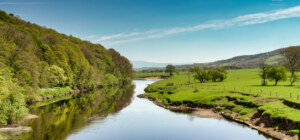What is Biodiversity Net Gain and how to prepare for it?
Since the start of April 2024, the Biodiversity Net Gain (BNG) obligation has applied to most planning permissions and will do so for all development consent orders (DCOs) from November 2025. BNG is a new mandatory condition that must be attached to all planning permissions , where any habitat lost by the development must be replaced with enhanced habitat elsewhere. The main principle of the approach is to assess the ecological value of the habitat that will be lost to development (calculated by a metric developed by Natural England) and implement measures to enhance biodiversity elsewhere, such that they will deliver a minimum of a 10% net gain over time. There must be a commitment to maintain the new habitat in its target condition for at least 30 years.
Some local authorities may have stricter policies than the statutory minimum of 10% net gain. You can check your local authority’s BNG policies via our table which contains links to England’s 317 local councils’ and 10 national park authorities’ references to BNG.
Full details of the new regime are set out in Schedule 7A of the Town and Country Planning Act 1990.













